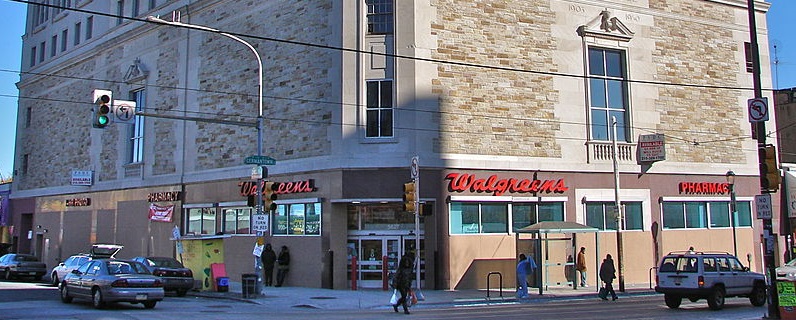Industry analysts had predicted that Apple would kick smartphone wallets into gear but that might not be it.
When Apple Pay was launched, many analysts believed this would be the start of powerful mobile payments trends. They felt that Apple was the key to the mainstream adoption of mobile wallets. That said, that wallet app has now been available for about two years and adoption has been slower than anticipated.
Some analysts are now saying that the start of the widespread use of mobile payments won’t happen for some time.
A couple of years ago, mobile payments trends were expected to become the next big thing. By now, it would be commonplace to see shoppers using their smartphones in-store to pay for groceries, clothing and other purchases. It would be routine to use a mobile device instead of a credit card or debit card at a checkout counter.
 However, mobile wallets have not taken off as expected. This has been the case both among mobile device users and among retailers. Now Fitch Ratings financial industry group director Michael Taino is predicting that the rate of adoption for mobile payments won’t just be slightly slower than expected. It will be much slower.
However, mobile wallets have not taken off as expected. This has been the case both among mobile device users and among retailers. Now Fitch Ratings financial industry group director Michael Taino is predicting that the rate of adoption for mobile payments won’t just be slightly slower than expected. It will be much slower.
Taiano predicts that mobile payments trends won’t truly take off for multiple decades.
In an interview with Fortune magazine, Taiano was quoted as saying that “This could be a multi-decade change that occurs.” He said that the adoption by consumers and retailers may be similar to the experience seen in the growth of e-commerce. He pointed out that as large as e-commerce now is and as much as it has grown over 20 years, it still represents only 8 percent of retail spending in the United States.
Taiano recently published a report based on his conclusions and the evidence that has led him to make them. He underscored a number of barriers that have stood in the way of mainstream mobile wallet adoption.
One hurdle in the way of mobile payments trends progress has been the lack of incentive to consumers. Shoppers find credit and debit card use to be simple, familiar and accepted in the majority of places they shop. Therefore, at the moment they don’t have much motivation to change those easy and convenient habits.
The company is now pushing the use of geolocation options to customers through their mobile app.
Walgreens geolocation beacons are taking a much more central role in the latest mobile app update. The application is now pushing the use of the store’s beacons with offers of location based deals such as coupons.
The Walgreens chain has been testing the use of location based beacons in certain specific stores.
The Walgreens geolocation testing first started in February and has been focused on Duane Reade locations. The store expects that these additional mobile marketing tools will help it to record an increases in sales. At the same time, the company has expressed certain concerns about barriers to widespread adoption.
 For this reason, Walgreens is being very careful and strategic about the way it is approaching location based marketing. It is seeking to ensure that its offers and features are always within its shoppers’ comfort zones.
For this reason, Walgreens is being very careful and strategic about the way it is approaching location based marketing. It is seeking to ensure that its offers and features are always within its shoppers’ comfort zones.
The reason is that Walgreens geolocation uses tech that has caused consumers elsewhere to voice concerns.
Location based beacons have the potential to boost both engagement and sales while in-store at Walgreens. This mobile technology is seen as particularly promising when it comes to selling consumer packaged goods (CPGs).
Moreover, recent studies have shown that CPG shoppers are interested in receiving discount coupons. BI Intelligence reported that 61 percent of American shoppers who had never used geolocation in-store would opt-in in exchange for receiving mobile coupons and discounts from a retailer.
Furthermore, that same report said that 47 percent of US shoppers would opt in to location based messages in exchange for loyalty rewards. Since CPG purchases happen exceptionally regularly, Walgreens may be on to something in using location based tech to offer in-store savings opportunities. This has the potential to boost total sales and customer loyalty.
In fact, the same report indicated that beacons such as those used by the Walgreens geolocation program are already making a difference. It estimated that $8 billion in CPG sales was influenced by the receipt of some form of beacon-triggered message while shopping in-store. That represents 2 percent of the total CPG sales in the United States.
 However, mobile wallets have not taken off as expected. This has been the case both among mobile device users and among retailers. Now Fitch Ratings financial industry group director Michael Taino is predicting that the rate of adoption for mobile payments won’t just be slightly slower than expected. It will be much slower.
However, mobile wallets have not taken off as expected. This has been the case both among mobile device users and among retailers. Now Fitch Ratings financial industry group director Michael Taino is predicting that the rate of adoption for mobile payments won’t just be slightly slower than expected. It will be much slower.
